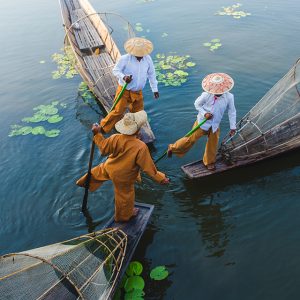View Source | April 24, 2017
 A Thought Leader Series Piece
A Thought Leader Series Piece
by Leah Gerber & Penny Langhammer
After a half-century of isolation, the Republic of Myanmar has reengaged with the international community following democratic elections in 2015. The country is experiencing rapid political, social and economic change, presenting it with both risks and opportunities.
Comprising a large portion of the Indo-Burma region, Myanmar is home to a remarkable diversity of unique species and ecosystems. While the country has maintained this rich biodiversity for centuries, Myanmar now faces challenges in sustainably managing its natural life-support systems and must address climate variability, water scarcity, agricultural productivity and energy security.
Recognizing that biodiversity underpins a range of ecosystem services that are required for sustainable development, Myanmar updated its National Biodiversity Strategy and Action Plan in 2015 and confirmed its commitment to the 2030 Agenda for Sustainable Development and the Sustainable Development Goals last year.
Key Biodiversity Areas (KBAs) – sites that contribute significantly to the global persistence of biodiversity – are a critical piece of the sustainable development puzzle. Safeguarding KBAs not only conserves biodiversity, it also provides valuable benefits to people – what we call “ecosystem services.” These services include freshwater provision, climate regulation, flood protection, food security, cultural values and many others.
KBAs were first identified in Myanmar in 2005 and subsequently refined in 2012, and these data are being used to strengthen Myanmar’s protected area system. At the same time, a global KBA standard was finalized in 2016. This new standard provides scientific criteria to support the identification, monitoring and conservation of these important sites.
While KBAs are identified based on biodiversity, the new standard emphasizes the importance of documenting the benefits to human well-being of safeguarding these sites.
To address this need and with support from the Science for Nature and People Partnership (SNAPP), we led a working group that developed a framework for documenting, measuring and valuing ecosystem services delivered by KBAs. We chose to pilot this approach in Myanmar, recognizing the high stakes for sustainable development in that country.
Building on previous work and with the use of spatially explicit data on ecosystem services, our SNAPP working group convened policy experts, government decision makers, scientists and civil society organizations to better understand how KBAs can support Myanmar’s commitments to biodiversity conservation and sustainable development. These include the Aichi Biodiversity Targets and Sustainable Development Goals.
We have a unique window to achieve sustainable development in Myanmar, and are hopeful that this work will ensure effective management and conservation of Myanmar's diverse ecosystems and associated natural capital. Safeguarding key biodiversity areas provides a promising mechanism to ensure the maintenance of the country’s unique biological diversity and the many benefits it offers to diverse human communities.
As the first country in the world to nationally employ the ground-breaking KBA Partnership established between the world’s leading conservation organizations, Myanmar has an opportunity to serve as a global example for how to include biodiversity in sustainable development.
Leah Gerber, a population ecologist and marine conservation biologist by training, is founding director of ASU's Center for Biodiversity Outcomes. She is the recipient of a National Science Foundation Career Award, a fellow with the Aldo Leopold Leadership Program and serves on the board of the Ecological Society of America. In her spare time, she is a professor of ecology, evolution and environmental sciences in the School of Life Sciences, a faculty affiliate in the Consortium for Science, Policy & Outcomes and a senior sustainability scientist in the ASU Wrigley Institute.
Penny Langhammer is a postdoctoral fellow with the Center for Biodiversity Outcomes and an adjunct professor in the School of Life Sciences. She serves as co-chair of the IUCN WCPA/SSC Joint Task Force on Biodiversity and Protected Areas and was the lead editor of "A Global Standard for the Identification of Key Biodiversity Areas."


